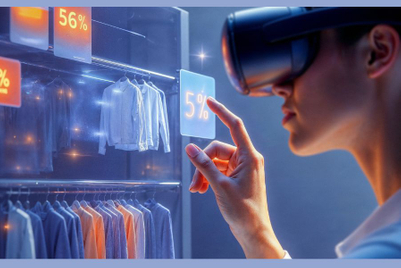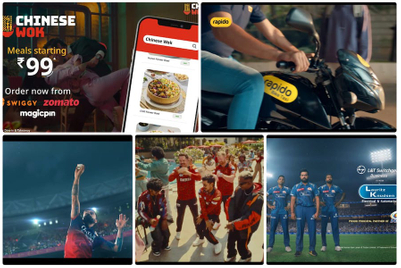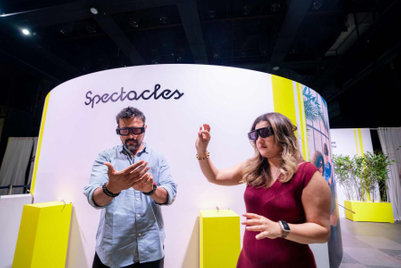
Marketing has evolved dramatically to keep pace with changing consumer needs and behaviours. Traditional methods like print ads, TV commercials, and direct mail were once the mainstays of brand outreach.
However, these approaches often fell short by delivering a one-size-fits-all message. This limited direct interaction and lacked the personal touch necessary to truly engage consumers.
Today, the marketing landscape is undergoing a profound transformation. Cutting-edge technologies like augmented reality (AR) filters and computer-generated imagery (CGI) are revolutionising consumer engagement, creating more immersive and interactive experiences than ever before.
AR filters are digital overlays that enhance real-world environments, transforming visuals, adding dynamic objects, and even creating entirely new landscapes within the user's field of view. These filters bridge the gap between the physical and digital worlds, offering personalised and captivating interactions that deeply resonate with consumers.
Domino's recently revolutionised consumer engagement with a 360-degree immersive AR filter campaign. This innovative filter transported users into a virtual world featuring Domino's outlets and delivery bikes, and it used advanced gyroscope tracking to create interactive elements like raining chilli peppers when the phone was tilted upward.
This campaign was a resounding success for the brand. It achieved over 40,000 impressions and 18,000 participations, showcasing the power of AR in creating captivating experiences.
Spain Tourism also harnessed the potential of AR to combat a pandemic-induced decline in visitors. They developed an AR filter that simulated adventure sports and virtually showcased the country's attractions. This creative initiative drew 2.2 million impressions and engaged 35,000 users, effectively promoting tourism offerings despite travel restrictions.
Similarly, boAt leveraged AR to blend music and motion, creating an audio-based filter that triggered musical elements linked to various teams with local instruments and vocals based on user movements. This interactive and personalised experience significantly boosted user engagement, highlighting how AR can transform brand interactions into memorable and enjoyable experiences.
Elevating storytelling
CGI has revolutionised visual storytelling, empowering marketers to create stunning, lifelike visuals that captivate audiences. Unlike traditional video, the technology can conjure entire worlds, animate inanimate objects, and present products in dynamic, imaginative ways that are engaging and unforgettable.
For example, Laneige's CGI video showcased the international journey of its lip care products from Korea to India. It highlighted not just the products but also the brand's dedication to global beauty standards.
Marketers need to use these technologies to address real needs or improve product interaction, not just for novelty. Collaborate with industry experts to combine technical skills and creative vision, producing high-quality content that uses advanced technologies and aligns with your brand's identity and marketing objectives.
By merging AR and CGI, brands can create memorable experiences that significantly enhance consumer engagement. This combination is particularly effective in personalised marketing, where intricate details and realistic visuals can drive consumer decisions and craft unique, compelling narratives.
Giving marketers the tools they need
As AR and CGI technologies continue to advance, they promise even more sophisticated tools for marketers. Enhanced facial recognition, object tracking, and spatial awareness in AR will enable more seamless, interactive experiences.
Meanwhile, CGI advancements will produce visuals so detailed and realistic that digital content will be nearly indistinguishable from real life. Embracing these cutting-edge technologies allows brands to elevate their storytelling, deeply engage with consumers, and stand out in the competitive marketing landscape.
As brands consider integrating AR and CGI into their marketing strategies, it’s crucial to approach these technologies thoughtfully to maximise their impact. Identify key areas in your marketing strategy where AR and CGI can have the greatest impact.
Coming to special days of the years, JioMart's Grand Republic Sale leveraged CGI to animate shopping carts bursting from a mobile app, each filled with diverse products, effectively communicating variety and generating excitement. Campus Shoes created a CGI video resembling a movie trailer for its Batman Edition shoes, immersing viewers in a 3D Gotham City and forging a powerful emotional connection with the audience.
Targeting these high-value opportunities ensures these technologies deliver tangible benefits and align with your business goals. When creating AR and CGI content, prioritise the consumer's experience. Make interactions intuitive and ensure the technology enhances engagement with your brand.
Adopting AR and CGI goes beyond new technology; it fundamentally improves how brands connect with consumers. As these tools advance, they will reshape creativity and interaction in marketing. Brands must integrate these technologies meaningfully and sustainably to enhance consumer experiences.
This strategy will not only engage and captivate but also build brand loyalty and advocacy. By prioritising innovation and consumer-focused experiences, brands can turn engagements into lasting relationships, exceeding audience expectations in modern marketing.
Sohamm Thakkar, co-founder and CEO at ARtmeTech







.jpg&h=268&w=401&q=100&v=20250320&c=1)
.png&h=268&w=401&q=100&v=20250320&c=1)
.jpg&h=268&w=401&q=100&v=20250320&c=1)
.jpg&h=268&w=401&q=100&v=20250320&c=1)
